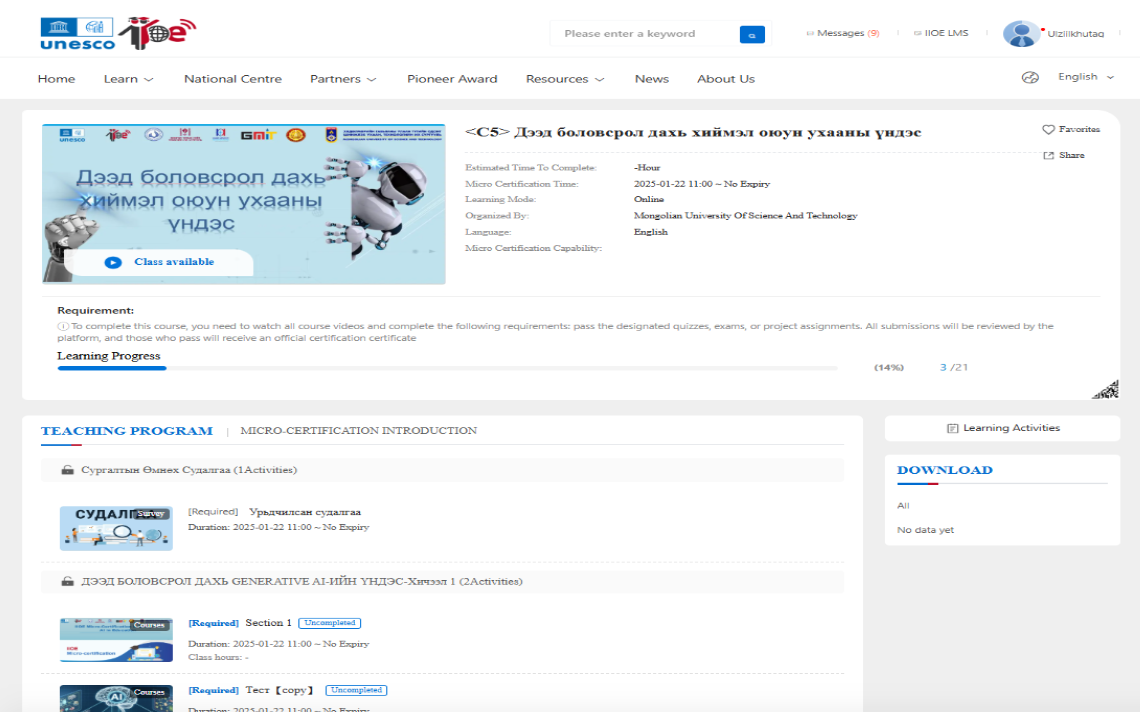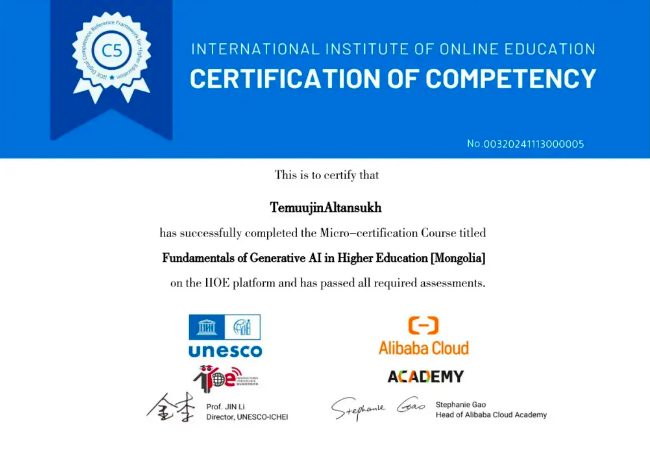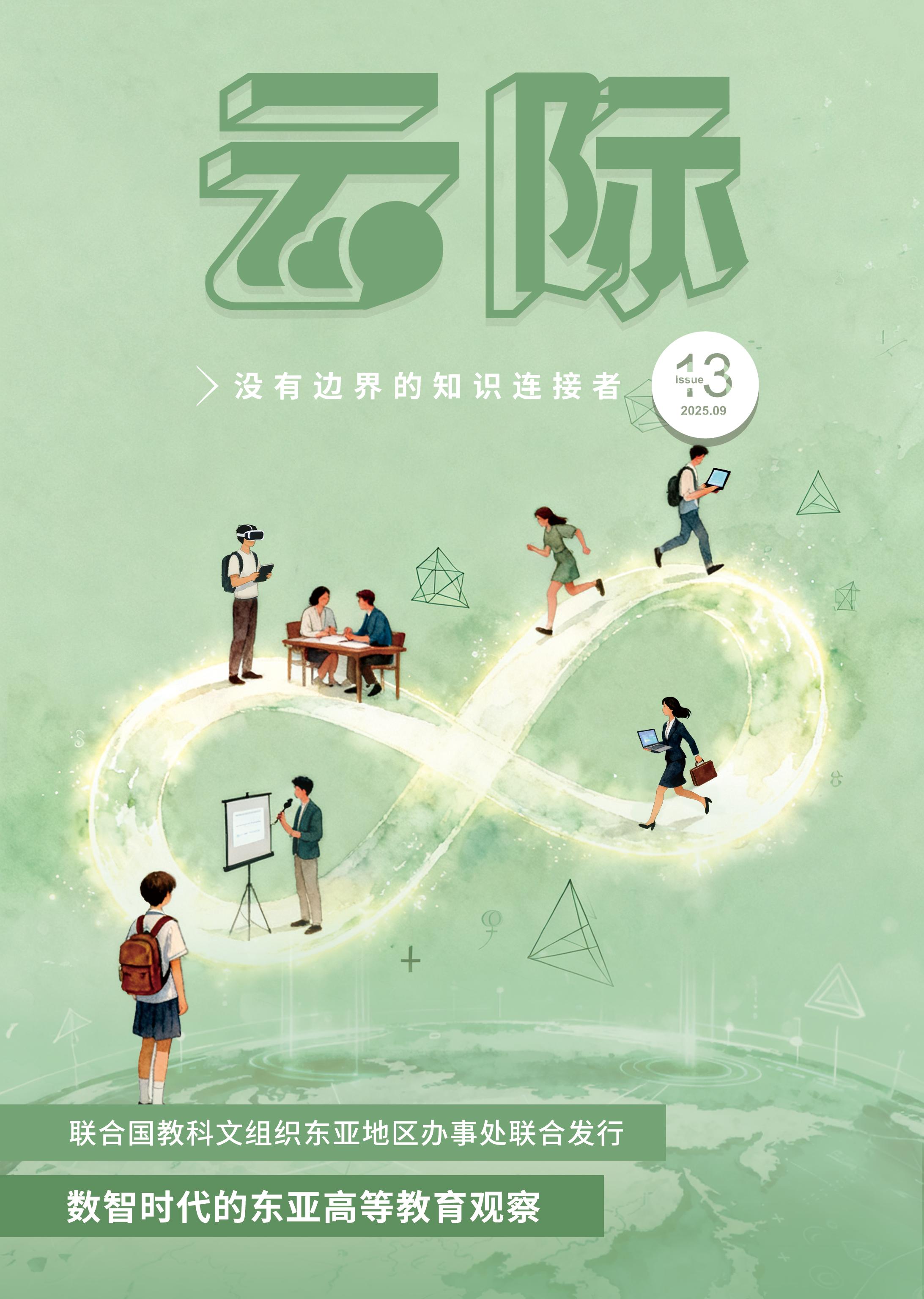Dialogue with CLOUD: Interview with the IIOE Mongolia National Centre
The twelfth issue of CLOUD reported on the notable achievements of the IIOE Micro-Certification Project for Higher Education Workforce Digital Competency Building (IIOE Micro-Certification Project) implemented at the Mongolia University of Science and Technology (MUST). The project has achieved notable results by empowering educators and facilitating the localisation, contextualisation, and nationwide dissemination of AI courses. This initiative has not only enhanced the digital literacy of university teachers in Mongolia but also established a sustainable capacity-building mechanism, making MUST a noteworthy case of good practice.
To gain deeper insight into the MUST’s successful experience with the IIOE Micro-Certification Project, this issue of CLOUD features an in-depth conversation with Dr. Ariunbolor Davaa, Professor at the university’s Open Education Institute (MUST-OEI).
 Dr. Ariunbolor Davaa, Professor and core member of the Open Education Institute at the MUST, plays a leading role in advancing higher education reform and international collaboration in Mongolia, with longstanding research focused on the modernisation of the national higher education system. Dr. Ariunbolor Davaa, Professor and core member of the Open Education Institute at the MUST, plays a leading role in advancing higher education reform and international collaboration in Mongolia, with longstanding research focused on the modernisation of the national higher education system. |
Q: MUST has been highly engaged on the IIOE platform, especially in promoting MC Project and conducting teacher training at scale. MUST ranks first in new registrations during March and April. During the localisation process, did MUST develop any particularly effective practices or mechanisms?
A: We take great pride in serving as the IIOE Mongolia National Centre. Our engagement with the IIOE platform particularly through the Micro-Certification (MC) initiative has been both strategic and transformative.
One of our most effective practices was the development of a multi-tiered cascade training model. This involved preparing 22 master teachers who not only helped localise the content but also facilitated regional trainings and provided mentoring to peers. This innovative model integrates offline workshops with a peer-mentoring mechanism, using a progressive "train-the-trainer" approach to accelerate the dissemination of the programme. It created a ripple effect that reached educators even in remote regions and greatly accelerated adoption.
In terms of content localisation, we translated and adapted three core AI courses Fundamentals of Generative AI in Higher Education, Teaching with AI: Practical Tips and Prompts and A Journey through the Future Classroom into Mongolian with full audio-visual support. This wasn't just about translation; it was about cultural and pedagogical relevance. The localised versions are now accessible on the IIOE platform and are widely used across Mongolian universities. Over 90% of participants rated the course highly for both content and usefulness, underscoring its effectiveness.
The project closely corresponds to Mongolia's national objectives for digital talent development. By June 2025, 2,054 educators from 38 institutions had participated in the programme, and 580 received certification. Among the 1,698 educators who completed the three Mongolian-language courses, about 30% are now actively integrating AI concepts into their curriculum and instruction. This clearly demonstrates that our initiative didn't stop at training, it led to meaningful changes in classroom practice.
|
|
IIOE Mongolian Courses | IIOE MC Project Certificate |
Q: In advancing digitalisation in higher education, institutions may face challenges such as limited ICT infrastructure or gaps in teachers' digital skills. How has MUST addressed these challenges (if any) while implementing the MC Project? For example, would you share any insights or strategies about expanding training coverage?
A: Yes, like many institutions in developing contexts, MUST also faced certain challenges in advancing digital transformation particularly in the early stages of the MC Project. These included uneven access to ICT infrastructure across regions, as well as varying levels of digital readiness among faculty.
To address these challenges, we adopted a phased and inclusive implementation strategy. One of the key success factors was leveraging our national network of master trainers, many of whom were developed through earlier capacity-building initiatives such as CDIO (Conceive, Design, Implement, Operate) and blended learning programmes. These master trainers played a critical role in cascading knowledge, delivering localised training sessions, and providing ongoing mentorship to faculty in both urban and rural institutions.
We also collaborated with educational authorities and university leaders to raise awareness about the long-term value of micro-certification and digital pedagogy. This helped generate institutional buy-in and encouraged faculty to actively engage in training programmes. Additionally, we developed hybrid delivery models to ensure accessibility offering both online and face-to-face sessions to accommodate bandwidth limitations and ensure broader reach.
Importantly, we ensured that the IIOE Micro-Certification training programmes were aligned with national policy goals and teacher qualification standards, which gave the initiative legitimacy and sustainability. Our experience shows that local adaptation, peer-led training, and a clear alignment with national frameworks are key to overcoming digital transformation barriers in higher education.
Q: Integrating IIOE Micro-Certifications into the national teacher qualification system was a significant innovation undertaken by MUST. Would you discuss the efforts MUST-OEI made in aligning policies, such as coordinating with educational authorities and designing credit-transfer mechanisms?
A: Integrating the IIOE Micro-Certifications into Mongolia's national teacher qualification framework has been one of the most impactful innovations led by the MUST), particularly through its OEI.
Our work began with aligning institutional strategies to national education policies. In close coordination with the Ministry of Education and relevant regulatory bodies, we ensured that the micro-certification model would enhance not duplicate the existing teacher qualification system. This required thoughtful policy dialogue, shared understanding, and collaborative planning.
A core part of the initiative involved developing a credit-transfer mechanism to formally recognise micro-certification achievements. We are currently piloting the integration of selected micro-courses into our official master's degree programmes at MUST, with the aim of creating seamless pathways from modular, informal learning to recognised academic qualifications.
Our current progress builds upon a strong foundation of past reform. Since 2015, MUST has been joined in the global CDIO Initiative. With support from the Asian Development Bank and the Temasek Foundation of Singapore, and in collaboration with Singapore Polytechnic, we implemented several capacity-building programmes such as "CDIO," "Advancing CDIO," "Active Learning Approaches,"and "Quality Assurance in Higher Education." These programmes, delivered through structured pedagogical training, led to the formation of a national network of master trainers, which helped scale innovation across Mongolia.
Leveraging this experience, we are now successfully implementing both the Blended Learning Methodology and the IIOE Micro-Certification Project. These initiatives are modernising teaching practices and promoting AI-integrated learning environments.
Above all, our approach emphasises equitable and inclusive access to quality digital education. We strongly believe that every educator, regardless of their geographic or institutional context, should have meaningful access to AI education resources and opportunities for lifelong learning.
Q: The recently launched joint action plant on Capacity-Building and Recognition of Digital and AI Competencies in Mongolia's Higher Education Sector, introduced at the High-Level Policy Dialogue in East Asia, is a strategic framework for integrating AI into higher education. How does MUST plan to operationalise this framework?
A: The Joint Action Plan on Capacity-Building and Recognition of Digital and AI Competencies in Mongolia's Higher Education Sector co-developed by MUST and UNESCO-ICHEI is a milestone initiative. Our implementation focuses on three key pillars:
Digital Skills Development:We are delivering foundational and intermediate-level courses such as "Digital Teaching Essentials" and "Applied Digital Pedagogy," along with advanced modules like "Advanced Teaching Design & Delivery" to deepen pedagogical capacity. Additionally, we are implementing a Lightboard Technology Training course with Micro-Certification, localised in both English and Mongolian.
AI Competency Enhancement:We are localising and delivering AI-focused training programmes such as "Prompt & Teaching with AI," "AI Tools in Teaching Scenarios," and "Build Your Own AI Chatbot." These programmes are designed to promote AI applications across various disciplines including education, natural sciences, and engineering. Special attention is given to generative AI and advanced AI tools through practical, context-relevant modules.
To further support faculty development, we are also introducing innovative tools such as the Faculty AI Portfolio, which enables instructors to document and showcase their competencies in AI-integrated pedagogy. This portfolio can support national-level recognition and career progression.
Moreover, our roadmap includes a series of national events to facilitate sharing of best practices and innovations:
An annual AI and Digital Education Summit (starting in 2026)
A bi-annual Educators’ Forum on Teaching Innovations
A National AI and Digital Teaching Award to recognise excellence in practice.
Through these initiatives, we aim not only to provide access to training but also to create a sustainable ecosystem where AI in education becomes deeply embedded, widely practised, and nationally recognised.
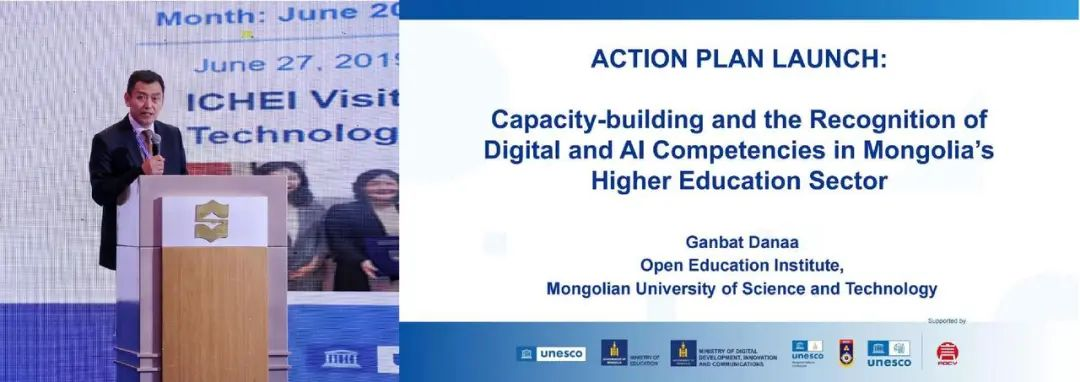
Q: In which areas does MUST hope to strengthen cooperation with the IIOE in order to better leverage the platform and support the university's own needs?
A: As one of the most engaged university partners within the IIOE network, MUST has had the opportunity to actively pilot and promote various platform-based initiatives. Through this experience, we've identified several areas where the IIOE platform and ecosystem could be further optimised to better serve local and regional needs.
Firstly, we see strong potential in expanding localised course offerings not only through language translation but also by contextualising content to reflect national educational policies, cultural dynamics, and institutional practices. Localisation should move beyond language and address pedagogical relevance, especially in disciplines like teacher education, engineering, and public administration.
Moreover, MUST is committed to further strengthening its multilateral collaboration with IIOE. We believe the IIOE platform can serve as a more dynamic collaborative space. Features that enable peer-to-peer exchange, joint course co-creation, or thematic working groups would help strengthen professional communities and knowledge transfer across institutions.
Finally, as MUST continue to lead national efforts in AI integration and digital capacity-building, stronger coordination between IIOE and national stakeholders such as ministries, accreditation bodies, and teacher development centres would ensure that platform activities align with national agendas and support system-wide transformation.
MUST's implementation of the IIOE Micro-Certification Project reveals: beyond equipment investment and external intervention, the digital transformation of higher education demands the strategic development of existing faculty and the creative mobilisation of local networks. The driving force for sustainable change lies in building enduring mechanisms for knowledge transmission—ensuring that each trained participant becomes a new dissemination node, enabling wide reach without compromising content quality. Its significance extends beyond a replicable technical pathway to a return to the essence of education: when AI technology is transmitted through Mongolian-speaking master teachers, a subtle balance emerges between technological empowerment and cultural continuity. This underscores that AI integration is far more than a mere technical transplant; it is a multidimensional transformation requiring mastery of tools, innovation in pedagogy, and the establishment of an ecosystem that sustains the flow of knowledge.


